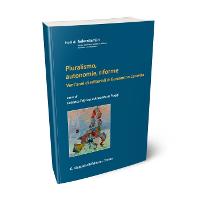
Log in or Create account
FOCUS - Reflective Judiciary N. 5 - 09/11/2018
The Long Journey of Women to the Courts: Some Evidence on Gender Diversity and Gender Awareness in the Swiss Federal Supreme Court
Does Justitia decide differently if underneath her robes, the judge happens to be male? Are female judges more likely to consider women’s interests in a case and to notice gender implications of apparently neutral rules and practices? The blindfold around her eyes should represent equal dispensation of justice without regard to age, race, language, social standing or gender. In reality, Justitia herself might play a role in deciding what is considered equal and what is not. Being blind and not taking into account the gender of parties and judges might not be the right attitude when it comes to judicially enforce gender equality. In Switzerland, female judges are a relatively new phenomenon, having come into existence only after the introduction of female suffrage at the federal level in 1971. Some Cantons were slightly less slow in accepting equal political rights of men and women; others took even more time to turn cantonal androcracy into a real democracy. The fact that women only entered parliaments at a very late stage was reflected in federal statutes which were still full of gender inequalities when these had long disappeared in other states. In 1971, ten women of diverse geographic, linguistic, political and even racial origins (Tilo Frey from French-speaking Neuchatel was originally from Cameroon) were elected, two more women soon followed. The pioneer parliamentarians had a rapid impact on the legislative agenda and successfully fought for improvements in the situations of unmarried mothers, for a more equitable marriage law and put issues such as domestic violence and abortion on the agenda of parliament. Notwithstanding the positive effects of female parliamentarians on law-making and equality, including equal opportunities, women are still underrepresented in parliament and no quota requirements exist. While 32 percent of the members of the National Council are women, their sisters in the Council of States are a meagre 15 percent. These women, representing the geographic and political diversity of the country, find it hard to win votes – and elections – on women’s issues. For instance, it took the Federal Parliament several decades to introduce a maternity insurance worth its name and until 2013 to introduce a law on family names that respected the equality of women and men. The same tendency can be observed at the cantonal level: after the introduction of female suffrage, numerous women were elected to represent the population but for several years, the numbers have been stagnating, at around 25 percent. In 1974, three years after the introduction of female suffrage on the federal level, the first female judge entered the Federal Supreme Court. Margrit Bigler-Eggenberger who had before been working as a judge in a cantonal court of St Gallen would remain the only judge sitting on the bench of the highest Swiss court for another seventeen years. Today, twelve out of the 38 full-time judges are female, which is still less than a third. The parliament has always taken and still takes considerable care to guarantee the adequate representation of all linguistic groups (currently three judges are Italian-speakers, 12 speak French and 23 German) and the proportionate representation of the political parties in the Federal Supreme Court, but still fails to ensure an appropriate representation of women. As in the case for parliament, no gender quota requirement exists for the highest court. Till date, not one woman has been appointed to the First Public Law Chamber of the Federal Supreme Court that deals with constitutional law; all six members of the “constitutional chamber” who are responsible for the authoritative interpretation of constitutional norms and values and have a decisive impact on constitutional reality are male. Only one female judge sits in the family law section of the Federal Supreme Court despite the fact that there is a large presence of women as parties in these legal fields. In the Criminal and Administrative Federal Courts, women are equally underrepresented… (continues)
NUMERO 22 - ALTRI ARTICOLI
-
ITALIA - DOTTRINA
Arbitrato rituale e giurisprudenza costituzionale
ITALIA - DOTTRINAIl finto 'effetto Marx'. Resistibile ascesa, deriva keynesiana e irresistibile declino del marxismo giuridico italiano
-
ITALIA - DOTTRINA
I futuri rapporti tra le Corti dopo la sentenza n. 269/2017
ITALIA - DOTTRINAIndipendenza e imparzialità del magistrato fuori ruolo
-
ITALIA - DOTTRINA
La 'riserva' di amministrazione nella gestione del debito pubblico (dello Stato) e i conseguenti limiti al sindacato giurisdizionale della Corte dei Conti.
ITALIA - DOTTRINALa dubbia legittimità dell'usucapione pubblica alla luce della Convenzione europea dei diritti dell'uomo
ITALIA - DOCUMENTAZIONEI giudici amministrativi valorizzano il diritto alla sicurezza giuridica



 Registrati
Registrati Login
Login
 Riforme istituzionali e forma di governo
Riforme istituzionali e forma di governo Lavoro Persona Tecnologia
Lavoro Persona Tecnologia Osservatorio di Diritto sanitario
Osservatorio di Diritto sanitario Osservatorio Trasparenza
Osservatorio Trasparenza Africa
Africa Human Rights
Human Rights America Latina
America Latina Territorio e Istituzioni
Territorio e Istituzioni Storico focus
Storico focus Scarica il Documento integrale
Scarica il Documento integrale STUDI FEDERALISMI
STUDI FEDERALISMI





03/06/2024
15/03/2024
29/12/2023
04/08/2023
05/06/2023
30/01/2023
09/12/2022
28/10/2022
28/03/2022
02/02/2022
17/01/2022
12/02/2021
18/01/2021
13/11/2020
12/10/2020
17/06/2020
01/06/2020
18/05/2020
04/05/2020
24/04/2020
10/04/2020
27/03/2020
10/04/2020
25/10/2019
27/09/2019
15/04/2019
25/03/2019
14/01/2019
14/12/2018
16/11/2018
09/11/2018
14/09/2018
03/09/2018
22/06/2018
23/02/2018
27/11/2017
02/10/2017